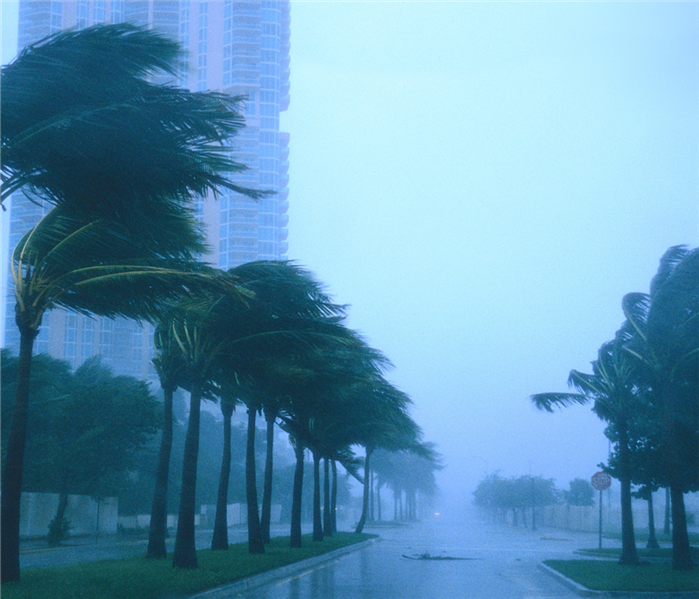Sunny With a Chance of...Thunder?
5/10/2023 (Permalink)
 The National Lightning Safety Institute says, “If you can see it, flee it; If you can hear it, clear it.”
The National Lightning Safety Institute says, “If you can see it, flee it; If you can hear it, clear it.”
We’re all growing excited as summer fun grows closer. The kids are getting out of school, maybe you’ve got a trip coming up, and you’re already planning the family cookouts and upcoming holidays-- life is pretty good.
The season is filled with sunshine and good times, and what most of us keep on the back burner or don’t think even about when we imagine summer is the threat of severe weather and thunderstorms.
Extreme weather can strike at any time, and it’s important to be prepared in such instances, even when times seem sunny-side-up. Here are some tips, reminders, and refreshers for Summer Storm Safety:
Being Prepared is Being Smart, and Being Smart is Being Safe
Swimming
- If a storm hits while you’re swimming in a pool or ocean, lying on the beach, or playing at a water park, remember the 30/30 rule: Go inside or seek shelter if you cannot count to 30 between seeing a lightning strike and hearing a thunderclap, and don’t go back out until 30 minutes have passed since the last thunderclap.
- You may be able to swim in an inside pool during a thunderstorm if it does not connect to an outside pool.
- Pool owners: don’t drain or cover your pool. Covers can become flying hazards. Keeping the pool full keeps it heavy and less apt to move. Clear away toys, umbrellas, furniture, and other items that can be damaged or cause damage in the event of a storm.
Camping
- Have alternatives for shelter. A tent will keep you dry from rainfall but serves no protection against lightning. If you can, get in your vehicle or campsite resident building. Your tent should be a last resort.
- Know the terrain. Thunderstorms in mountainous areas are the most dangerous due to higher elevations. Desert terrains with box and slot canyons can also be very dangerous.
- Choose your campground wisely. If you’re looking to make camp with protection from potential severe weather in mind, try to avoid these spaces: open areas where you may be vulnerable to a direct strike, near isolated trees where you may be vulnerable to side flashes, bodies of water, high or exposed terrain.
- Invest in a National Oceanic and Atmospheric Administration (NOAA) radio. This is especially helpful should the weather turn in your sleep, as the device sound an alarm if there is severe weather nearby.
The National Lightning Safety Institute says, “If you can see it, flee it; If you can hear it, clear it.”
Preparedness
- In any season, it’s important to have a storm prep plan in place. Even on vacation! A checklist of items to keep on hand or in your vehicle include bottled water, flashlights, first aid kit, nonperishables, whistle (or item that can be a signal for help).
- Before going away, depending on the duration of your stay, it can be a good idea to check on your home’s insurance policy in case of storm or non-storm related property damage and update where necessary.
- Prior to leaving your hotel or room, be sure to check your location’s weather daily and plan your activities accordingly! It’s better to be safe than sorry.
After a Storm
- Even after a storm has settled, it’s important to be aware of the dangers that still linger: Stay away from downed power lines; Never drive through a flooded roadway; Keep clear of areas badly affected as there is risk of falling debris.
- Only leave your house/resort/hotel once it’s officially OK to do so!
Stay Safe, Stay Smart, and Have Fun This Summer!

 24/7 Emergency Service
24/7 Emergency Service